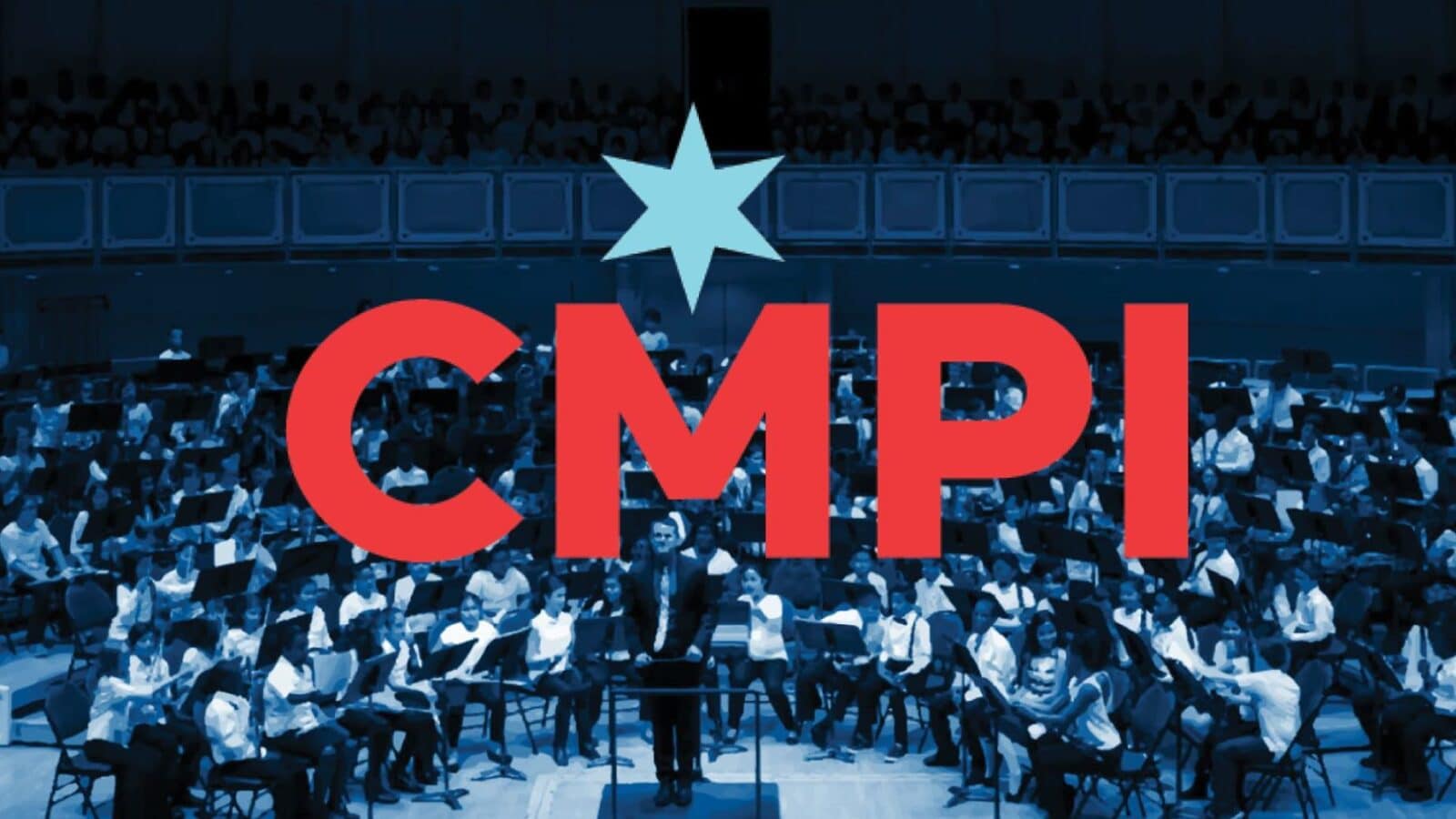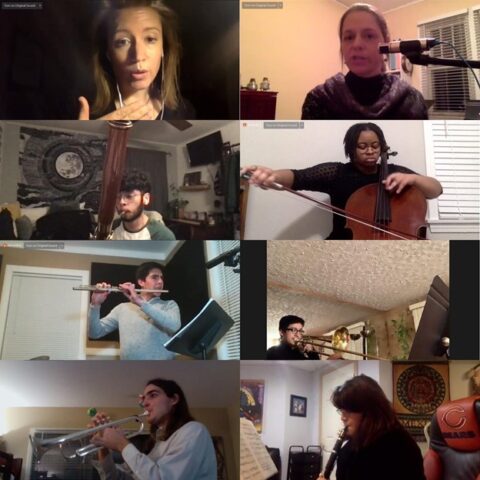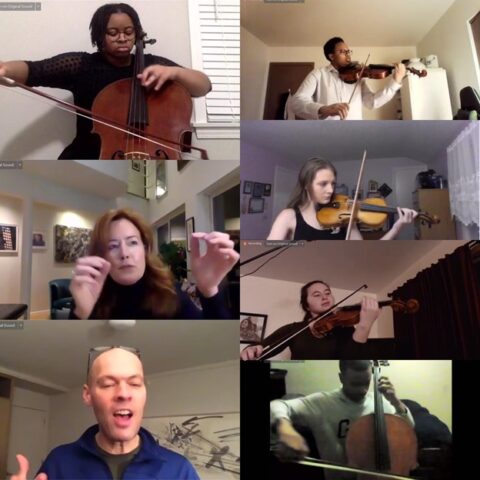Last month, CMPI hosted a series of Live, Over Zoom! Mock Auditions. The senior woodwinds and brass played for trumpet professor Leah Schumann from VanderCook College of Music, flute professor Marie Tachouet from Roosevelt University, and New World Symphony audio engineer Johnathan Smith.
The senior strings had the opportunity to perform their audition repertoire for Desiree Ruhstrat from Northwestern University and CSO cellist Brant Taylor from DePaul University. They also received audio feedback from Ed Ingold, a renowned audio engineer based here, in Chicago.
- CMPI winds gather for a mock audition series held live, over Zoom
- CMPI strings gather for a mock audition series held live, over Zoom
Here are some of the nuggets of wisdom that were shared by the panel.
Do
- Display a solid understanding of scales! This is your first impression. Exhibit confidence and ease when asked to play your scales. Especially over Zoom, think of it as an opportunity to display your greatest sound and consistency among range. Remember, Ready – Aim – Fire, not Ready – Fire – Aim. ????
- Play using the best sound equipment that you can access. An external microphone spaced 6-8 feet away will ensure that your dynamics and color changes come across through the screen. Rehearse your sound ahead of time with your private lesson teacher or another valued musician. Sound distorted = adjust the gain or move the microphone further away. Sound too swimmy = move the microphone closer. ????
- Take into consideration that the acoustic impacts how short you should play your staccatos. Dry room = play a little longer. Resonant room = play a little shorter.
- Choose the largest room you have access to, preferably without carpet to allow for your absolute best sound. If you can do your auditions from a rehearsal room, church or hall, that is most ideal. 85% of good audio comes from the room you are in.
- Dress professionally as you would for a live audition – button down shirt and nice pants or a nice dress. (Sorry, no business on top and pajamas on bottom for auditions.) ????
- Experiment with lamps you might have around the house to provide soft lighting. Pointing the lamp toward a light-colored wall to direct brightness toward you can work very well.
- Consider your visual framing as much as possible. The panel will want to see a full frame of your instrument and a front view of your face, as opposed to a profile view. ????????
- Be prepared for the panel to ask what you would like to start with. Choose something that makes you feel confident and settled. ????
- Have all of your music organized in a binder. The audition committee wants to spend their time hearing you play, not watching you shuffle through music or picking up music that has fallen on the floor. ????
- Do experiment with your Zoom settings – microphone input gain can be adjusted under settings. This can have a profound impact on your ability to convey dynamic contrast and minimize distortion, especially in extreme registers.
- On Zoom, be sure you are using Original Sound to eliminate the sound coming in and out (upper left corner of Zoom screen) and suppress background noise in settings to the lowest setting.
- If you have adjusted the Zoom settings and the sound is still cutting out, try a different cable between the microphone and device (before your audition, of course).
- If you feel yourself getting nervous, focusing on maintaining pulse can be an excellent way to redirect your attention. ????
- If you are unsure of the stability of your Wi-Fi connection, then hardwire your internet connection into your computer with an Ethernet cable.
- Research the college you are auditioning for and be prepared to answer the question, “Why are you interested in attending this institution?” ????
Don’t
- Don’t forget to turn off your notifications/put all of your devices in airplane mode during your audition. ????
- Don’t play your scales with a mixed eighth note and sixteenth note, but rather an even rhythm to demonstrate fluidity and evenness of tone.
- Don’t feel rushed as you transition from one piece to the next and/or need to switch instruments (clarinets and trumpets, I’m talking to you!). The audition committee will be shuffling through documents and files on their computer. Take your time. They likely need it even more than you do! ⏳
- If the expectation is to play from memory, do not have your stand in the frame. Move your stand out of the way, just as you would in a live audition. Otherwise, the audition committee will be distracted wondering whether you are looking at your music. ????
- Don’t share your music as multiple pdf or jpg files. Each piece should be one file to reduce shuffling between files on their devices.
- Don’t wear the same-colored shirt as the wall behind you. This can be distracting to the audition panel. You don’t want to look like a floating head holding an instrument! ????
- Don’t choose tempi that you cannot control comfortably. Focus on confidence and comfort ????; avoid portraying a lack of control or anxiety. ????
- For slower tempi, don’t go too slow as it can be harder to control bow speed or breath support when slightly nervous. ????
- Don’t assume the panel is going to ask you to stop at ends of large sections. Convey that you are in the zone and PERFORM! ???? Trust the panel to ask you to stop when they wish you to move on.
- Don’t play seated unless you play an instrument that requires you to sit, such as bassoon, cello or double bass. Stand up and perform!
- Don’t play your mock audition without testing your sound settings with someone beforehand!
- Don’t hesitate to ask questions. Having questions shows that you are enthusiastic and interested in studying at that school!
- Don’t forget to prepare a reply to the prompt, “Tell us a little about yourself.”
- Don’t underestimate the importance of playing musically with lots of heart. If you can get heart and spirit across on a Zoom audition, you will stand out! ????
- Don’t forget to smile and be gracious for the opportunity to audition. ????


